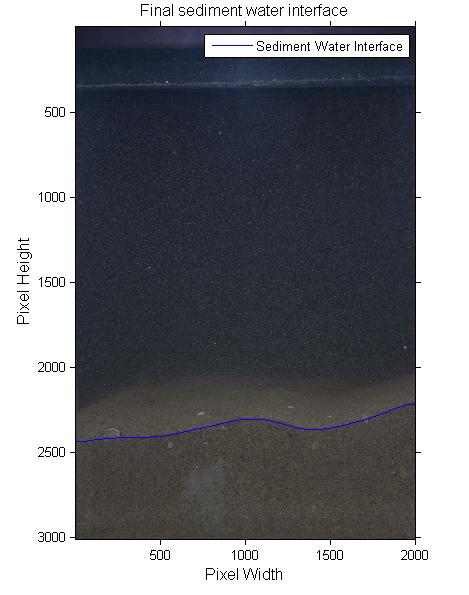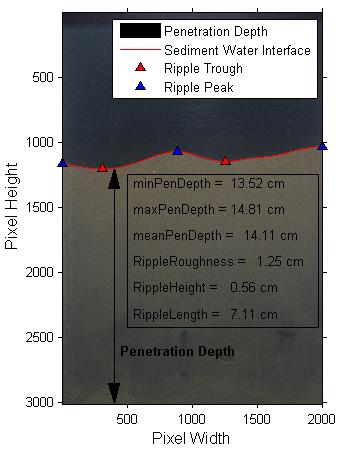Acquiring physical properties of the seabed is important for understanding sediment transport and resuspension processes and for monitoring the changing health of benthic ecosystems. Increasingly sediment profile imagery (SPI), a rapid, in-situ technique is used in conjunction with grabs and cores to obtain these properties. SPI is an inverted periscope that penetrates the seabed and takes a vertical profile picture of the upper 20 cm of the sea bed. In a project with CEFAS (Centre for Environment, Fisheries and Aquaculture science) an automated, near real-time tool is being developed to automatically do grain size analysis onboard of research cruises, funded by the Southampton Marine and Maritime Institute (SMMI).
The tool is being developed by Edward Long in G&G, together with Charlie Thompson, Shari Gallop, and Sasan Mahmoodi in Electronics and Computer Science. Algorithms are being developed to automatically detect the sediment water interface and calculate the profile depth, bed roughness and vertical and horizontal grain size. This will assist monitoring of sea bed stability and habitat health.

